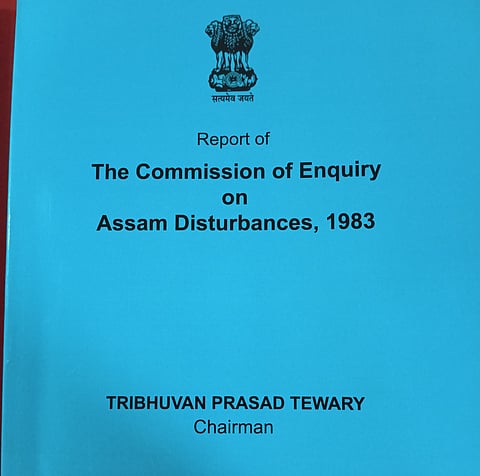
- Home
- Live Blog
- Breaking News
- Top Headlines
- Cities
- NE News
- Sentinel Media
- Sports
- Education
- Jobs

Staff Reporter
GUWAHATI: The TP Tewary report has depicted the picture of infiltration and land grabbing in the sars, grazing reserves, reserve forests, etc. in Assam.
The report said that the categories of lands mentioned above provide the main attractions and are the places where illegal migrants try to settle. In the beginning, the illegal migrants generally come to the sars. There were about 600 sars in the Brahmaputra and the Barak Valleys. The statement of former Director of Land Records, DN Bhattacharjee, submitted to the commission, said, "Most of the sar areas have not been cadastrally surveyed. The system of matabars and dewanis is in existence in the sar areas, and in fact, some of the sar areas have been named locally after the dewanis concerned, like Ujairer Sar, Bhasinir Sar, etc. The immigrant Muslims came in search of lands and jobs. The dewanis keep these helpless persons as their serfs and get their lands cultivated by paying very low wages. Gradually after getting a foothold, these migrants move to another sar. The diwanis keep their lands even in the name of these immigrants as benami. The migrants, out of fear, don't dare to claim the lands even though they might be in their names. Whenever any new sar appears, these diwanis send these labourers and occupy the land forcefully."
Bhattacharjee also mentioned that "efforts were made in the past to evict encroachers from some of the sars, but eviction operations from government khaslands were stopped by a circular No. ASS. 550/76 dated October 27, 1979. Most of the sar areas are under the category of khaslands, though some of them also come under village grazing reserves and professional grazing reserves… Diwanis and matabars are influential persons who dominate the areas of their influences and control the economic and social life, and even the political life, of the people in their respective areas. These persons have no legal status. They exercise their controls through muscle powers. Normally, infiltrators, i.e., the non-nationals, get shelter in the sar areas."
Paragraph 7.12 of the report said, "Initially people coming here in search of land were labourers. Later, they began acquiring certain rights over land. For the protection of the backward tribal people, certain laws were enacted to prevent alienation of their lands in certain areas to people belonging to other than tribal or backward communities. But, over the years in actual implementation, the enforcement of the restriction over land alienation was not done as strictly as it should have been. The result was that large areas in tribal belts and blocks got alienated to other people. This created tension and also resulted in certain communal and group clashes. There had been clashes between ethnic groups, linguistic groups and communal groups."
A memorandum submitted to the commission by a former adviser to the Governor of Assam said, "The chars have been the traditional hideouts of illegal migrants into the state for many years. Only strict vigilance with the full cooperation of the local people can prevent encroachment of sar lands by unauthorised immigrants."
Also Read: Assam: Tewary Panel Justifies Holding Elections Amid Tensions